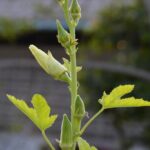Mulch plays a crucial role in the success of vegetable gardens, providing numerous benefits that promote healthy plant growth and productivity. Among the various types of mulch available for gardeners, red cedar mulch stands out as a popular choice. In this article, we will delve into the properties and attributes of red cedar mulch to determine if it is indeed a good option for your vegetable garden.
The introduction of mulch in vegetable gardens serves multiple purposes. Firstly, it acts as a protective layer that helps suppress weed growth, reducing competition for nutrients and water. Secondly, it insulates the soil from extreme temperatures, keeping roots cooler in hot weather and warmer during colder seasons. Additionally, mulch aids in moisture regulation by reducing evaporation from the soil surface, maintaining consistent moisture levels essential for healthy plant development.
Red cedar mulch offers several specific advantages that make it an appealing option for vegetable gardeners. It is known for its natural repellent properties against pests such as slugs, snails, and insects due to its strong aroma. Furthermore, red cedar mulch breaks down slowly compared to other organic materials like straw or wood chips. This slow decomposition rate prolongs its effectiveness as a weed barrier and helps retain moisture in the soil for more extended periods.
However, along with its benefits come potential drawbacks that need to be considered before deciding to use red cedar mulch in vegetable gardens. Issues such as acidification of soil pH and allelopathic effects on some plant species have been raised concerning red cedar mulch. Therefore, careful evaluation of your specific gardening needs and preferences is crucial when determining if red cedar mulch is suitable for your vegetable garden.
In the following sections of this article, we will take an in-depth look at the properties and impact of red cedar mulch on soil health and pest control while providing practical insights from case studies and expert recommendations.
By the end, you will have a comprehensive understanding that will help make an informed decision about whether red cedar mulch is the right choice for your vegetable garden or if alternative mulch options may be more suitable for your specific needs.
Understanding the Benefits of Red Cedar Mulch
Red Cedar Mulch is a popular choice for many gardeners due to its numerous benefits and unique properties. Understanding these advantages can help gardeners make an informed decision about whether or not to use red cedar mulch in their vegetable gardens.
One of the key benefits of red cedar mulch is its ability to suppress weed growth. The natural oils present in red cedar act as a repellent to many types of weeds, preventing them from taking root and competing with vegetable plants for nutrients and water. This can save gardeners valuable time and effort spent on weeding, allowing them to focus on other important tasks in the garden.
In addition to weed suppression, red cedar mulch also helps regulate soil temperature. The mulch acts as an insulator, keeping the soil cooler during hot summer months and warmer during colder seasons. This stability in temperature creates favorable conditions for vegetable plants, promoting healthy root development and overall growth.
Red cedar mulch is also known for its ability to retain moisture in the soil. The mulch prevents evaporation, reducing water loss and helping to conserve moisture levels in the garden. This is particularly beneficial during dry spells or in regions with limited water availability. By maintaining adequate moisture levels, red cedar mulch ensures that vegetable plants have consistent access to water, leading to better yields and healthier crops.
Overall, understanding the benefits of red cedar mulch can help gardeners decide if it is the right choice for their vegetable gardens. From suppressing weeds to regulating soil temperature and retaining moisture, red cedar mulch provides several advantages that contribute to successful gardening outcomes. However, it’s essential to consider individual gardening preferences and factors such as cost, availability, and long-term maintenance before making a final decision on using red cedar mulch in your vegetable garden.
Pros and Cons of Red Cedar Mulch in Vegetable Gardens
Red Cedar Mulch is a popular choice for vegetable gardeners due to its unique properties and benefits. However, it also has some potential drawbacks that should be considered before using it in your garden. In this section, we will weigh the advantages and potential drawbacks of Red Cedar Mulch in vegetable gardens, helping you make an informed decision about whether or not to use it.
One of the main advantages of Red Cedar Mulch is its natural insect-repellent properties. The aroma of red cedar naturally repels many common garden pests such as ants, termites, and moths. This can help reduce the need for chemical pesticides in your vegetable garden, creating a more environmentally-friendly growing environment. Additionally, Red Cedar Mulch is long-lasting and durable, often lasting up to several years without needing to be replaced.
However, there are also some potential drawbacks to using Red Cedar Mulch in vegetable gardens. One of the main concerns is the possibility of allelopathy – a natural process by which certain plants release biochemicals that inhibit the growth of other nearby plants.
Red cedar contains chemicals known as thujaplicins, which can have an inhibitory effect on plant growth if applied too heavily or too close to sensitive plants. Therefore, it is important to use Red Cedar Mulch sparingly and keep it away from young seedlings or other plants that may be sensitive to these chemicals.
Another consideration when using Red Cedar Mulch is its high carbon-to-nitrogen ratio. While this can be beneficial for slowing down weed growth in your vegetable garden, it can also lead to nitrogen deficiency in the soil.
This means that additional nitrogen fertilizer may need to be applied to compensate for the nitrogen that gets tied up by the decomposition process of the mulch. It’s important to monitor your soil’s nutrient levels regularly when using Red Cedar Mulch and make any necessary adjustments.
Overall, when considering whether or not to use Red Cedar Mulch in your vegetable garden, it’s important to weigh the advantages of its natural pest-repellent properties and long-lasting durability against the potential drawbacks of allelopathy and nitrogen deficiency. By carefully considering these pros and cons, you can make an informed decision about whether Red Cedar Mulch is the right choice for your vegetable garden.
| Advantages | Potential Drawbacks |
|---|---|
| Natural insect-repellent properties | Possible allelopathy |
| Long-lasting and durable | Possible nitrogen deficiency |
Red Cedar Mulch and Soil Health
One of the key factors to consider when choosing mulch for your vegetable garden is its impact on soil health. Red cedar mulch has been known to have a significant influence on both nutrient retention and moisture regulation in the soil, making it a popular choice among gardeners.
When it comes to nutrient retention, red cedar mulch excels in keeping essential elements in the soil. The properties of cedar wood help slow down the decomposition process, allowing organic matter to break down gradually and release nutrients over time.
This slow-release effect ensures that your vegetable plants receive a steady supply of nutrients for optimal growth and development. Additionally, red cedar mulch has been found to enhance microbial activity in the soil, promoting a healthy ecosystem where beneficial bacteria and fungi break down organic matter further, releasing even more nutrients for plant uptake.
Moisture regulation is another crucial aspect of soil health, especially in vegetable gardens where consistent watering is vital. Red cedar mulch acts as an effective moisture regulator by reducing evaporation from the soil surface. The natural oils present in cedar wood help retain moisture, preventing rapid drying of the soil during hot weather conditions. This ability to moderate soil moisture levels can be particularly beneficial during dry spells or in regions with limited water availability.
| Aspect | Effect of Red Cedar Mulch |
|---|---|
| Nutrient Retention | Slow-release decomposition leads to increased availability of nutrients over time. |
| Moisture Regulation | Reduces evaporation from the soil surface, maintaining consistent moisture levels. |
Overall, red cedar mulch plays a vital role in promoting soil health in vegetable gardens. Its ability to enhance nutrient retention and regulate moisture levels can contribute to healthier, more productive plants. However, it is important to note that the impact of red cedar mulch on soil health may vary depending on the specific conditions of your garden and the types of vegetables you are growing.
Red Cedar Mulch as a Natural Pest Repellent in Vegetable Gardens
One of the key considerations when choosing mulch for your vegetable garden is its ability to deter pests. Red cedar mulch is known for its natural pest-repellent properties, making it an attractive option for gardeners looking to protect their vegetable plants from unwanted visitors. This section will delve into the role of red cedar mulch in deterring common pests and explore why it can be an effective natural solution.
Red cedar mulch contains natural compounds called thujone and thujaplicin, which have been found to repel pests such as insects, rodents, and even certain types of fungi. The strong aroma emitted by red cedar mulch acts as a deterrent to pests, making them less likely to infest the garden. Additionally, red cedar mulch has anti-fungal properties that can help prevent fungal diseases that commonly affect vegetable plants.
One common pest that vegetable gardeners often struggle with is the aphid. These small insects can quickly multiply and cause damage to the delicate leaves and stems of vegetable plants. However, research has shown that red cedar mulch can deter aphids due to its strong scent. By spreading a layer of red cedar mulch around your vegetable plants, you can create an environment that is unattractive to aphids and reduce their presence in your garden.
Another pest that can wreak havoc on vegetable gardens is the slugs and snails. These slimy creatures are notorious for munching on young seedlings and leaves of vegetables such as lettuce and cabbage. Red cedar mulch can act as a barrier between these pests and your precious plants. The rough texture of the mulch makes it difficult for slugs and snails to navigate through it, thus reducing their access to your vegetables.
Case Studies and Success Stories
There have been numerous case studies and success stories that highlight the positive impact of using red cedar mulch in vegetable gardens. These real-life experiences provide valuable insights and can help gardeners make informed decisions about incorporating red cedar mulch into their own gardening practices.
One common theme among these case studies is the significant improvement in soil health after using red cedar mulch. Cedar mulch has been found to enhance nutrient retention in the soil, allowing plants to access essential elements for growth and development. This can be especially beneficial for vegetable gardens, which require sufficient nutrients to produce healthy and abundant crops.
In addition, red cedar mulch has shown promising results in regulating moisture levels in the soil. This is particularly important for vegetable gardens as consistent moisture levels are necessary for optimal plant growth. Gardeners have reported that using red cedar mulch helps retain moisture during dry periods, reducing water stress on plants and ensuring they receive adequate hydration.
Furthermore, many gardeners have found that red cedar mulch acts as a natural pest repellent in vegetable gardens. Cedar contains natural oils and compounds that repel insects, making it an effective deterrent against common pests such as aphids, slugs, and snails. This can help prevent damage to vegetable plants and reduce the need for chemical pesticides.
Overall, the case studies and success stories of using red cedar mulch in vegetable gardens demonstrate its potential benefits for improving soil health, regulating moisture levels, and deterring pests. However, it is important to consider individual garden conditions and preferences when deciding whether to incorporate red cedar mulch into your own garden. Consulting with experienced gardeners or horticulturists can provide valuable insights and recommendations tailored to your specific needs.
How to Apply Red Cedar Mulch in Vegetable Gardens
Applying red cedar mulch in vegetable gardens is a straightforward process that requires careful preparation and maintenance. Here is a step-by-step guide to help you properly install and maintain red cedar mulch for optimal results:
- Prepare the garden bed: Before applying red cedar mulch, it’s important to prepare the garden bed properly. Remove any weeds or debris from the area, loosen the soil with a garden fork or tiller, and level it out.
- Calculate the amount of mulch needed: Measure the dimensions of your garden bed to determine how much red cedar mulch you will need. A general rule of thumb is to apply a layer that is 2-3 inches deep, but be sure to take into account any slope or uneven areas.
- Weed control: To prevent weeds from growing through the mulch, it’s advisable to lay down a weed barrier such as landscape fabric or newspapers before applying the mulch. This will help suppress weed growth and make maintenance easier.
- Lay down the mulch: Carefully spread the red cedar mulch over the prepared garden bed, making sure to distribute it evenly. Use a rake or gloved hands to smooth out any lumps or uneven patches.
- Maintain proper depth: It’s important to maintain an adequate depth of red cedar mulch throughout the growing season. As organic matter decomposes over time, replenish the mulch layer as needed to keep it at a consistent thickness of 2-3 inches.
- Watering and moisture regulation: Red cedar mulch helps retain moisture in the soil by preventing evaporation and reducing weed competition for water resources. However, be mindful not to overwater your vegetable garden as excessive moisture can lead to fungal diseases.
- Regular inspection and maintenance: Periodically inspect your garden bed to ensure that the mulch layer is intact and evenly distributed. Remove any weeds that manage to grow through the mulch, and top up the mulch layer as necessary.
By following these steps for proper installation and maintenance, you can maximize the benefits of using red cedar mulch in your vegetable garden. However, keep in mind that each garden is unique, and experimentation may be necessary to determine the ideal amount and frequency of mulch application for your specific plants and conditions.
Other Mulch Options for Vegetable Gardens
Introduction
While red cedar mulch offers numerous benefits for vegetable gardens, it is important to explore other mulch options as well. Different types of mulches can provide unique advantages and drawbacks depending on the specific needs of your garden. In this section, we will compare red cedar mulch to alternative options and help you find the best choice for your vegetable garden.
The Benefits of Red Cedar Mulch
Before diving into alternative mulch options, it is essential to understand the benefits that red cedar mulch brings to vegetable gardens. Red cedar mulch offers excellent weed suppression by creating a barrier that inhibits weed growth. It also helps regulate soil temperature by providing insulation against extreme heat or cold conditions. Additionally, red cedar mulch has natural insect-repellent properties, making it an attractive option for gardeners looking for pest control measures.
Straw Mulch
One popular alternative to red cedar mulch is straw mulch. Straw provides excellent moisture retention, helping the soil stay hydrated during dry spells. However, one drawback of straw is that it can decompose more quickly compared to red cedar mulch, requiring regular replenishment throughout the growing season.
Grass Clippings
Another alternative is using grass clippings as mulch. Grass clippings are readily available and can be a sustainable choice. They break down quickly and add nutrients back into the soil as they decompose. However, using grass clippings as mulch requires caution as they can create a dense mat if applied too thickly, preventing proper air circulation and potentially causing rot and fungal issues.
Wood Chips
Wood chips are another popular option for vegetable gardens. They are long-lasting and slow to decompose, providing consistent weed suppression over time. Wood chips also improve soil structure as they break down, enhancing drainage in heavy soils. However, fresh wood chips may compete for nitrogen with the plants in your vegetable garden, so it is crucial to age them or combine them with a high-nitrogen fertilizer to mitigate this potential drawback.
Choosing the Best Mulch for Your Vegetable Garden
When deciding on mulch options for your vegetable garden, consider factors such as availability, cost, desired benefits, and any specific requirements of your plants. It is also worth experimenting with different mulches in different areas of your garden to determine which works best for each crop. Ultimately, finding the right mulch will depend on your gardening goals and the unique characteristics of your vegetable garden.
Expert Tips and Recommendations
Choosing the Right Mulch
When it comes to choosing the right mulch for your vegetable garden, it is important to consider factors such as the specific needs of your plants, the climate in your area, and your overall gardening goals. Gardeners and horticulturists have shared their insights and recommendations on using red cedar mulch in vegetable gardens.
One common recommendation is to choose a mulch that is organic and rich in nutrients. Red cedar mulch meets these criteria as it is made from shredded cedar bark, which decomposes slowly over time and enriches the soil with valuable organic matter. It also has a pleasant aroma that can deter certain pests, making it an attractive option for those looking for natural pest control methods.
Pest Control Benefits
Many gardeners and horticulturists emphasize the effectiveness of red cedar mulch as a natural pest repellent in vegetable gardens. The strong scent of cedar acts as a deterrent for insects like aphids, beetles, and slugs, which are common pests that can damage vegetable crops. Moreover, red cedar mulch discourages certain fungal diseases due to its natural anti-fungal properties.
However, it is important to note that while red cedar mulch can repel some pests, it may not be effective against others or provide complete protection against all types of diseases. Some gardeners recommend combining red cedar mulch with other pest control methods such as companion planting or using row covers to enhance its effectiveness.
Application Tips
To make the most out of red cedar mulch in your vegetable garden, experts recommend applying it properly and maintaining it regularly. Begin by preparing your garden beds by removing weeds and loosening the soil. Apply a layer of red cedar mulch about 2-4 inches deep around your plants while avoiding contact with their stems.
It is crucial to maintain a proper mulch depth to ensure the health of your vegetables. As red cedar mulch decomposes, it may need to be replenished periodically to maintain its beneficial effects. Regular monitoring of moisture levels is also important as red cedar mulch has good water retention properties but can prevent rainwater from reaching the soil if applied too thickly.
By following these expert tips and recommendations, you can make an informed decision about using red cedar mulch in your vegetable garden. Remember to consider the specific needs of your plants and experiment with different methods to find what works best for you.
Conclusion
In conclusion, after evaluating the benefits and drawbacks of using red cedar mulch in vegetable gardens, it is clear that this type of mulch can be a valuable addition to your garden. Red cedar mulch offers numerous advantages, such as its ability to regulate moisture levels, retain nutrients in the soil, and act as a natural pest repellent. These properties make it an excellent choice for promoting healthy plant growth and reducing the risk of pests and diseases.
However, it is important to consider some potential drawbacks when using red cedar mulch. One major concern is its acidity, which can affect certain plants that prefer more neutral soil conditions. Additionally, red cedar mulch may require more frequent replenishment compared to other types of mulch due to its faster decomposition rate. However, these limitations can often be mitigated with proper planning and maintenance.
Ultimately, the decision whether or not to use red cedar mulch in your vegetable garden should depend on various factors such as your specific gardening needs and preferences. It may be beneficial to consult with local gardeners or horticulturists to gather insights and recommendations based on their experiences. Alternatively, you could conduct small-scale trials or experiments in your own garden to determine how well red cedar mulch performs alongside your chosen vegetable crops.
Remember that no single type of mulch will work universally for all vegetable gardens. It is essential to consider other alternative options available and determine what works best for your unique circumstances. With careful consideration and experimentation, you will be able to find the right mulching solution that promotes optimal plant health and productivity in your vegetable garden.
Frequently Asked Questions
Is red cedar mulch good for vegetables?
Red cedar mulch can be a suitable option for vegetables in certain situations. Cedar mulch has natural properties that make it resistant to pests and decay, which can help protect vegetables from potential damage. Additionally, cedar mulch retains moisture well and helps regulate soil temperature, creating a favorable environment for vegetable growth.
However, it’s important to note that cedar mulch may slightly increase the pH level of the soil over time, which could affect the nutrient availability for some vegetables that prefer more acidic conditions. It is advisable to perform a soil test before using red cedar mulch with vegetables to ensure it aligns with their specific needs.
When should you not use cedar mulch?
There are circumstances when cedar mulch should not be used. One example is when you have plants or trees that require acidic soil conditions since cedar mulch can potentially raise the pH level over time.
Additionally, if you are dealing with a garden infested with slugs or snails, using cedar mulch may not be ideal as these pests are less deterred by its natural oils compared to other types of organic mulches. In such cases, opting for alternative options like straw or pine needle mulch could be more appropriate.
Is cedar mulch OK around tomato plants?
Cedar mulch can generally be used around tomato plants without causing significant issues. While tomatoes do prefer a slightly acidic soil, the effects of red cedar on pH levels are usually minimal and may not excessively impact tomato plants’ growth or productivity.
However, it is always recommended to monitor the soil pH periodically when using any type of mulch and adjust nutrient amendments accordingly to maintain optimal growing conditions for tomatoes. As long as proper care is taken to provide an adequately balanced growing environment for tomato plants alongside the use of cedar mulch, they can coexist harmoniously in most cases.

If you’re looking to get into vegetable gardening, or are just looking for some tips on how to make your current garden better, then you’ve come to the right place! My name is Ethel and I have been gardening for years. In this blog, I’m going to share with you some of my best tips on how to create a successful vegetable garden.





